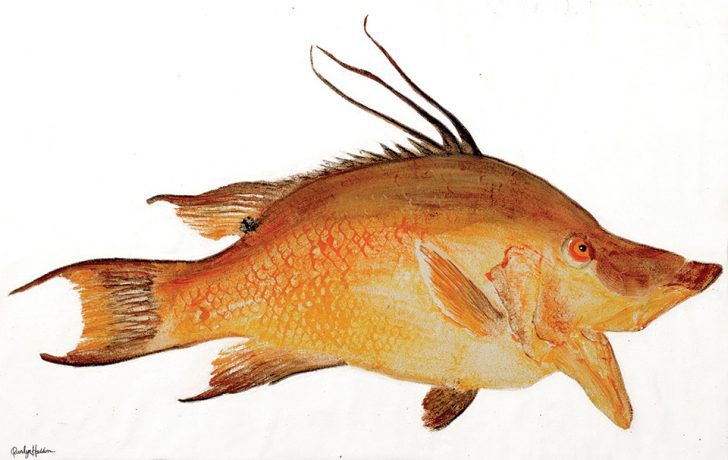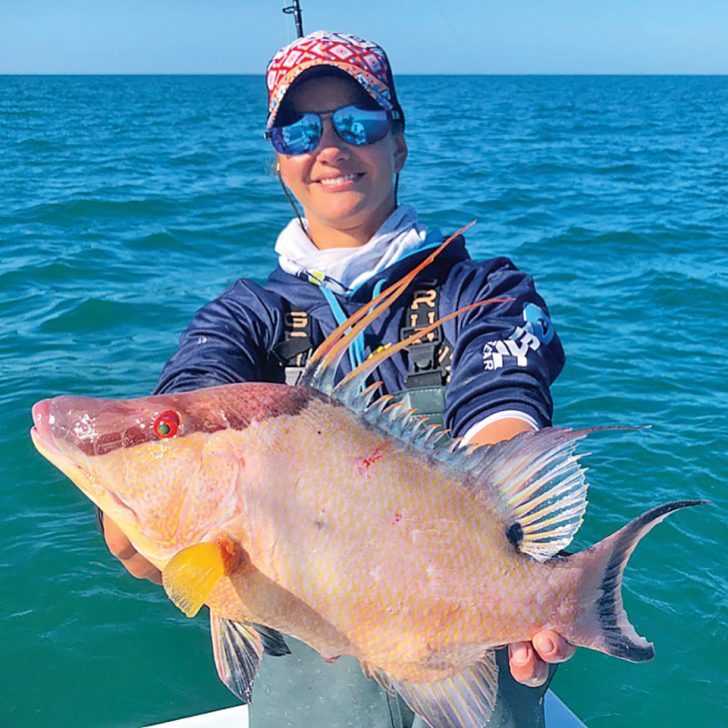By Capt. Quinlyn Haddon
Gyotaku is a Japanese art form that replicates a catch with a print made from the actual fish.
Gyotaku artists can produce a beautiful representation of your catch at a fraction of the cost of traditional taxidermy, and the final product might also compliment your home better than a giant 3D mount. Even better, you can attempt this art for yourself. While providing the satisfaction of catching and memorializing the fish yourself, if you’re quick enough with the process, you can still enjoy eating it.
You will need:
- A fish
- Acrylic paint and paintbrushes
- Paper towel
- Rice paper or cloth
After a long day on the water, the last thing you’ll want to do is start painting a fish. The sooner you get to a print, the better the final product will be. However, it is fine to leave your catch on ice overnight or even freeze it. If you freeze it, make sure it’s as flat as possible and its fins aren’t squished. Fins damage easily when shoved up against the back of the freezer.
When you’re ready to start, the first step is to dry the fish. Open all the fins and dry out all the crevices. The drier the fish is, the more readily it will receive paint and transfer it back to your canvas.
Next, use rolls of paper towels to prop open and extend the dorsal, pelvic and anal fins and tail. Use bits of paper towel shoved into the gills to give them depth in the final product, as well as propping up the pectoral fin for the same reason.
Consider colors of the fish for your paints as well as for which color paper or cloth you want to use for the background. Then cut a manageable sized piece. Typically, white or black backgrounds produce the best outcome.
Apply paint directly to the fish while standing above it. Keep in mind that you want to achieve a two-dimensional image. If you paint too far over the top of its head or too far under its belly, your final image will look obese. This is especially important to keep in mind with rounder fish, like tuna. Have fun with all the details, and don’t forget the eyeball and even small amounts of paint on the teeth.
Next, lay the cloth or paper over the painted fish and rub your fingers over it, starting from the center and working to the edges. Be delicate and thorough, touching every ridge on every fin, every contour, every scale and every tooth you painted.
Slowly peel off the paper or cloth, let it dry, and then touch up the details.
Any fish works for this process, but ones with more pronounced scales, like a snapper, produce a much more detailed print.
Capt. Quinlyn Haddon guides with Reel Lucky Fishing Charters out of St. Petersburg, Fla. Contact them at (504) 920-6342.

